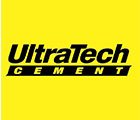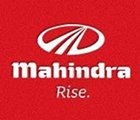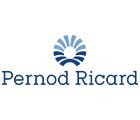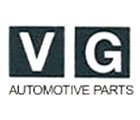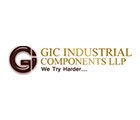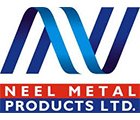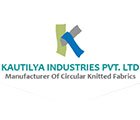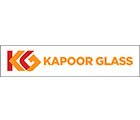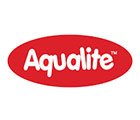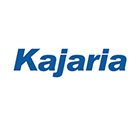Glimpses from our booth at ACREX 2024 at Greater Noida
Thank you to all who joined us in exploring innovative industrial cooling solutions at ACREX 2024.
Talk To An Evapoler Expert at +91 89-55-805-805
Keeping your home cool and comfortable during summer becomes a top priority. Ductless air cooling systems, or ductless mini-split systems, have emerged as a popular solution for efficient and customisable cooling. Here, in this blog, we’ll talk about everything you need to know about ductless air cooling systems, from how they work to their benefits and installation process. Let’s embark on a journey to discover the future of home cooling.
Before we talk about the advantages of ductless air cooling systems, let’s first understand how they work. Unlike traditional central HVAC systems, ductless systems consist of two main components: an indoor air-handling unit and an outdoor compressor unit. A small refrigerant line and electrical wiring connect these components.
The indoor unit blows cool air into your living space, while the outdoor unit expels hot air. The refrigerant circulates between the two units, absorbing heat from indoors and releasing it outside. This process, known as heat exchange, allows ductless systems to efficiently cool your home without the need for extensive ductwork.
Ductless air cooling systems offer various benefits that make them a compelling choice for homeowners:
Ductless systems allow for zoned cooling, enabling you to cool specific areas of your home while leaving others unconditioned. This targeted cooling can lead to significant energy savings, as you won’t waste energy cooling unused spaces.
Installing ductwork in an existing home can be costly and invasive. Ductless systems are relatively easy to install, requiring only a small hole in the wall for the refrigerant line, making them a cost-effective and convenient solution.
With individual air-handling units in different rooms, you can customize the temperature to suit each room’s occupants. Say goodbye to thermostat wars!
Ductless systems are known for their whisper-quiet operation, ensuring peaceful nights and undisturbed conversations.
Traditional ductwork can accumulate dust and allergens. Ductless systems have multi-stage filtration, helping to maintain clean and healthy indoor air.
Installing a ductless air cooling system involves several steps:
A professional technician will evaluate your home to determine the number and placement of indoor units required for efficient cooling.
The indoor units are mounted on walls or ceilings in the desired locations. These units are connected to the outdoor unit via the refrigerant lines.
Electrical connections are made to power the indoor units and outdoor compressors.
The system is charged with the appropriate amount of refrigerant to ensure optimal performance.
The technician tests the system to ensure it cools effectively and efficiently.
Ductless air cooling systems are relatively low-maintenance, but regular care is essential for optimal performance. Simple tasks like cleaning or replacing air filters and keeping the outdoor unit free from debris can prolong the system’s lifespan and maintain its efficiency.
Ductless air cooling systems have revolutionized the way we keep our homes comfortable. Their energy efficiency, ease of installation, and customizable cooling capabilities make them an attractive option for homeowners. If you’re considering an upgrade to your home’s cooling system, ductless mini-splits should definitely be on your list. Embrace the future of home comfort and enjoy a cool, relaxing summer without breaking the budget.
Regarding the textile industry, staying cool isn’t just a comfort; it’s a necessity. The constant whirring of machines and the bustling activity can quickly heat the workspace. This is where the ingenious technology of the evaporative air cooling system for the textile industry steps in. Let’s dive into the world of evaporative air cooling systems and how they work their magic in the textile industry.
Imagine the sensation of coolness when a gentle breeze brushes against your skin on a hot day. An evaporative air cooling system uses a similar principle to provide relief in warm environments. It’s a natural process where water turns into vapour, absorbing heat from the surrounding air and lowering the temperature.
The heart of an evaporative air cooling system is the evaporative cooler, also known as a swamp cooler. This cooler has three main components: a water pump, cooling pads, and a fan.
The water pump circulates water from a reservoir onto the cooling pads. These pads are usually made of a special absorbent material that holds water without getting too wet.
The cooling pads are designed to be highly porous. As water flows through them, it forms a thin film that air can easily pass through.
The fan draws warm air from the environment through the damp cooling pads. As the air passes through the pads, it comes into contact with the thin water film, causing some water to evaporate. This evaporation process absorbs heat from the air, significantly lowering its temperature.
In the bustling world of textile manufacturing, temperature control is essential. Machines run continuously, producing things that we use every day. But these machines also generate a lot of heat. This is where the evaporative air cooling system steps in.
One of the most attractive features of an evaporative air cooling system is its energy efficiency. Unlike traditional air conditioning systems that require a lot of electricity, evaporative air cooling system uses significantly less power. The main energy consumption comes from the fan and the water pump.
The evaporative air cooling system constantly brings in fresh air from the outside. This means that the air inside the textile factory remains well-ventilated and free from the recirculated air that can sometimes feel stuffy.
While traditional air conditioners can make the air too dry, evaporative air cooling systems add a bit of moisture to the air. Maintaining the right balance is crucial in a textile setting, where humidity levels can affect the quality of fabrics and other materials.
For many textile businesses, managing operating costs is a priority. Evaporative cooling systems not only have lower installation and maintenance costs compared to traditional AC units, but they also have lower running costs due to their energy efficiency.
The textile industry is also looking for eco-friendly solutions as the world shifts toward more sustainable practices. An evaporative air cooling system aligns with these goals as it uses natural processes and doesn’t rely on harmful refrigerants.
While evaporative air cooling system offers many benefits, there are two main factors to consider:
An evaporative air cooling system is most effective in dry climates. The air may already be saturated with moisture in humid environments, making the cooling process less efficient.
Cooling pads need regular maintenance to prevent mineral buildup and mould growth. The water used should also be of good quality to avoid scaling.
Maintaining a cool and comfortable working environment is key in the dynamic world of textile manufacturing. Evaporative air cooling system for textile industry provide an intelligent solution by harnessing the power of evaporation to keep temperatures in check. With benefits like energy efficiency, cost-effectiveness, and sustainability, these systems are weaving their magic to keep the textile industry cool and thriving. What are you thinking? Have one for your textile industry to give employees a healthy and comfortable environment.
In today’s factories, workers need to have a comfortable and efficient place to work. This is where the Industrial Ductable Cooler for the factory comes in. It’s like a super smart machine that makes hot factory areas much cooler and more comfortable. Let’s explore what these industrial ductable coolers are all about and see how they’re making factories better workplaces.
Factories are the heartbeat of production, often bustling with activity and machinery generating significant heat. As temperatures rise, so do concerns about worker comfort and overall efficiency. Here are steps in the industrial ductable cooler, a purpose-built solution to combat heat-related challenges. This cooling system is designed to seamlessly integrate with a factory’s existing ductwork, ensuring a steady flow of cooled air throughout the workspace.
At the heart of these coolers lies a straightforward principle: evaporative cooling. Just as a breeze feels cooler near a water body due to evaporation, these coolers employ a similar mechanism. Warm air from the factory is drawn into the unit, passing through water-saturated pads. The air cools as water droplets evaporate, and the cooler air is circulated back into the factory.
One of the most significant advantages of industrial ductable coolers is their cost-effectiveness. They consume considerably less energy than traditional air conditioning systems, which can result in substantial savings on energy bills.
These coolers are environmentally friendly since they use the natural process of water evaporation to cool the air. They don’t rely on harmful refrigerants or contribute to greenhouse gas emissions.
Unlike air conditioners that recirculate indoor air, ductable coolers constantly bring in fresh outdoor air, enhancing indoor air quality by reducing pollutants and odours.
Industrial ductable coolers are relatively low-maintenance systems. Regular cleaning and occasional pad replacement are all required to keep them running optimally.
Integrating these coolers with existing ductwork is a relatively straightforward process that minimises factory downtime during installation.
Selecting a reliable industrial ductable cooler manufacturer is crucial to reap the above mentioned benefits. Here are some factors to consider:
As the manufacturing landscape evolves, prioritising worker comfort and operational efficiency remains paramount. Industrial ductable cooler for factories has emerged as a game-changer in achieving these goals. By harnessing the power of evaporative cooling, these systems offer cost-effective, eco-friendly, and customisable solutions for factories of all sizes. When considering the installation of an industrial ductable cooler, remember to partner with a reputable industrial ductable cooler manufacturer to ensure a seamless transition to a cooler, more productive work environment.
Below, we explore five key reasons why evaporative air coolers outperform air conditioning units.
The primary advantage of evaporative air cooling lies in its eco-friendliness. Unlike refrigerated cooling systems that dry out the air and use chemicals that harm the environment, evaporative cooling works entirely on natural processes.
Using water to cool the air, portable evaporative coolers release environmentally safe air and maintain comfortable humidity levels without drying out your indoor environment.
Evaporative air coolers boast minimal operational costs, making them an economically sound choice. These coolers require electricity only to power their pumps and fan units, resulting in approximately 50% less operational expenses compared to air conditioning units, which rely on multiple power-hungry components. Enjoy cool, refreshing air without breaking the bank.
Portable evaporative coolers are designed with simplicity in mind, making them easy to maintain. With only two main replaceable parts – a water pump and a fan motor – you can easily handle the maintenance tasks yourself.
The straightforward design and availability of affordable replacement parts ensure that your evaporative cooler remains in optimum condition, providing long-lasting and efficient cooling performance.
Fresh air is a key benefit of an evaporative cooler. evaporative coolers increase humidity levels, which is particularly beneficial in dry climates. Additionally, the cooling pads in the cooler act as effective filters when properly maintained and cleaned.
These pads help prevent the entry of airborne contaminants into your lungs, ensuring that you and your family can breathe cleaner air.
Evaporative coolers produce minimal carbon dioxide (CO2) emissions, making them a greener and healthier choice. Unlike air conditioning units, which release substantial amounts of CO2, evaporative coolers have a significantly lower environmental impact.
By opting for an evaporative air cooler, you contribute to a cleaner and more sustainable environment while promoting the well-being of those who breathe the air.
By regularly maintaining your evaporative air cooler, you can extend its lifespan and maximize its benefits. Evapoler’s portable evaporative cooler is an eco-friendly and affordable option suitable for both homes and offices. Experience the advantages of evaporative cooling for a long-lasting and comfortable cooling experience. Invest in an evaporative air cooler today and enjoy efficient, cost-effective, and healthier cooling.
An air washer is an air purifier that cleans the air using water to trap pollutants and impurities. Air washers typically consist of a fan that draws air through a series of damp pads or plates, where the water in the pads or plates absorbs dust, dirt, and other particles from the air. The air is then released back into the room, typically with higher humidity than before.
Air washers are often used in areas with high air pollution or dust levels, such as industrial facilities or construction sites. They can also be used in homes and offices to improve indoor air quality and increase humidity levels, which can be beneficial for people with respiratory problems or dry skin.
An air washer is used for air purification, humidification, and cooling. Its primary function is to improve indoor air quality by removing pollutants such as dust, allergens, and odors from the air.
Air washers are commonly used in industrial and commercial settings such as factories, warehouses, and data centers to improve air quality. Still, they can also be used in residential settings to improve the overall air quality in the home.
In addition to purifying the air, air washers can also humidify the air by adding moisture to the air. This can help reduce air dryness and alleviate symptoms such as dry skin, sore throat, and coughing. Some air washers also have cooling functions that can help lower the room’s temperature, making them versatile and useful tools for improving indoor air quality and comfort.
There are different types of air washers available in the Market:
Direct air washers are also known as single-pass air washers, as they use a one-pass system where the air is washed once and then released back into the room. In direct air washers, the air is forced through a series of wet pads, where it is scrubbed clean by the water. The air is then released back into the room as purified , cool and humidified air.
In indirect air washers, the air is first passed through a Sensible heat exchanger, where it is cooled and then passed through a series of wet pads to remove pollutants. The purified air is then heated,if required , and released back into the room.
Innovated Multi pad Air Washers:
Normally Air washers come with single pad and air filters on its air suction side.Now a days Muti pad Air washers called High Static cooling units are also available .The benefits of muti-pad air washers are manifold:
Both direct and indirect air washers have advantages and disadvantages, and the choice of which type to use depends on the user’s specific needs. Direct air washers are generally more efficient and less expensive but require more water and are less effective at removing certain pollutants. On the other hand, indirect air washers are more effective at removing impurities and require less water, but they are more expensive and require more maintenance.
The features of an air washer can vary depending on the specific model and manufacturer, but some common characteristics of air washers include the following:
An air washer typically has a water tank that holds the water used for washing the air. The tank size can vary depending on the model, and larger tanks can mean longer periods of operation between refills.
An air washer may have a built-in air filter that captures larger particles before the air passes through the water. This can help extend the water filter’s life and improve air quality.The air filters normally used are of 10 micron filtering capacity made of washable synthetic HDPE media.
An air washer can cool by evaporation and add humidity to the air by using the water in the tank to humidify the air as it is washed.
Many air washers come with multiple speed settings that allow the user to adjust the speed of the fan and the amount of air that is washed.
Some air washers have an automatic shut-off feature that turns the unit off when the water tank is empty. This can help to prevent damage to the unit and save energy.
Many air washers are designed to be energy-efficient, with low power consumption and features like programmable timers and sleep modes.
Air washers, also known as evaporative humidifiers or humidifying air purifiers, add moisture to dry indoor air while filtering out impurities such as dust, pollen, and other particulates.
The basic principle behind air washers is using a rotating drum or disk containing a wetted filter material. As dry air is pulled through the filter, the water on the filter evaporates, cooling and humidifying the air. The evaporative process also causes impurities in the air to become trapped in the filter, providing a basic level of air purification. The moist air is then blown out of the unit and circulated throughout the room, raising the humidity level and providing relief for people suffering from dry skin, allergies, or other respiratory issues.
To maintain effective operation, it is important to regularly clean and replace the filter material in an air washer to prevent the buildup of bacteria, mold, and other harmful contaminants.
An Air Washer and an Air Handling Unit (AHU) are two different systems used for indoor air treatment, with some similarities but also some key differences.
An Air Washer is primarily designed to cool ,humidify and purify the air by adding moisture to it and filtering out impurities. It uses a wet filter material to trap particles and pollutants while adding humidity to the air via evaporation. The air washer is often used in areas where the air is excessively dry, such as in data centers, printing facilities, and other industrial settings.
On the other hand, an Air Handling Unit (AHU) is a device that is designed to condition and circulate air throughout a building. It is typically composed of a blower, heating or cooling coils, filters, and dampers. The AHU can cool or heat the air, control the humidity, and distribute the conditioned air to various parts of the building via a network of ducts.
The AHU is a complex system that can be customized to meet specific indoor air requirements, such as the level of air filtration, temperature, and humidity control. It is commonly used in commercial buildings, hospitals, and other large structures requiring high air quality.
In summary, while an Air Washer focuses on air cooling ,adding humidity and purifying the air, an AHU is a more comprehensive system that is used for air conditioning and circulating the air throughout a building.
All you need to know about air washers are here, and we hope you got the idea about the Air washer, their usage, and their types. If you still need clarification or are trying to decide what is best, browse our products or visit @https://www.evapoler.com/ for more information. Our team will help you out in making the best decision.
We look forward to helping you and making your Indoor environment comfortable and healthy.
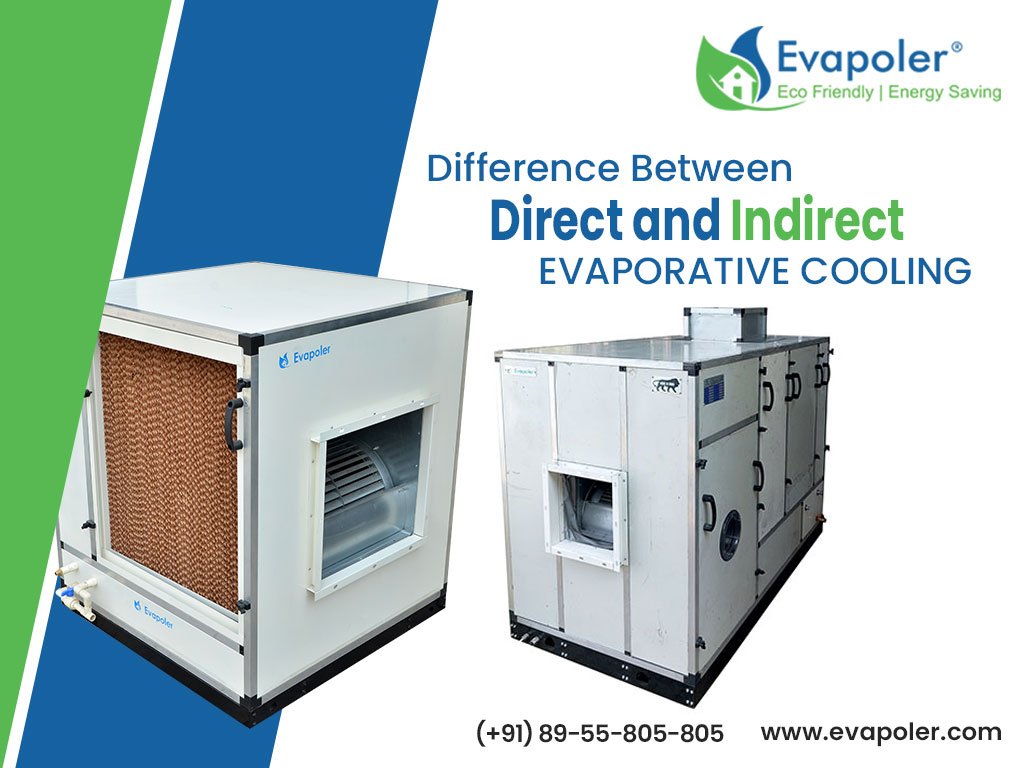
Evaporative cooling is one of the greener cooling techniques for utilizing water as its refrigerant. To evaporate 1kg of water into an atmosphere, 680W of energy is required. For steam humidifiers, this energy normally comes from the electricity or gas being used to boil the water. However, for direct evaporative cooling , this energy is taken from the air in the form of latent heat, which results in a drop in air temperature.So for every 1kg of water evaporated into an atmosphere, 680W of evaporative cooling is achieved,making it most energy efficient compared to other modes of cooling.
It makes the technology environment-friendly and provides lots of benefits to the users. Evaporative cooling works on the principle called evaporation of water. By this principle, water takes heat from the incoming air and then evaporates to cool down the air to produce the cooling effect.
As the entire process consumes low energy, it becomes the cost-effective and energy-efficient method to keep the space cool in dry and hot climates. Generally, a blower or fan is used to draw the warm air from outside and pass it via wet pads to evaporate. Two different techniques are used in evaporative cooling – direct and indirect.
Scroll down your eyes to know the significant Difference between direct and indirect evaporative cooling and its uses in detail!
It defines the system where the incoming outside air is blown across a wet cellulose , the moisture present on the surface evaporates and reduces the air temperature. In this method, all the cooling effect is obtained by the evaporation of water and this cool air is transferred to to the space being cooled. The cooling efficiency of this system increases with increase in ambient temperature and decrease in relative humidity levels.
In this system, the stream of air first passes through an air to air heat exchanger . It has alternate channels of polymer plates. In one channel water is sprinkled from top and hot water enters in counter flow arrangement form bottom side .the water evaporates and cools the incoming air.This cooling effect is transferred to other side by conduction.The other side of the surface as well as the atmospheric air passing through adjacent channel is cooled without adding moisture content,since it is being cooled without coming in direct contact with water. The attached video will make things clear.
You will now get an idea of evaporating cooling and its two significant techniques. The following section will explain the potential differences between direct and indirect evaporating cooling. These techniques are often called two stages. It gives you an in-depth understanding of the working of evaporative cooling and makes the right purchase decision.
Now, you will understand the major Difference between direct and indirect evaporative cooling systems. In a direct evaporative cooling system, water evaporates into the air stream through the engineered pad to offer the cooling effect.
But, an indirect evaporative cooling system uses evaporating water to cool the airstream passing through the heat exchanger. Therefore, it maintains constant humidity in the treated air. Both have specific benefits and drawbacks. You must consider those elements before making any decision.
Usually, Evapoler’s direct and indirect evaporative air cooling systems are sustainable and energy efficient as it uses nature’s own way of cooling.
Overall, with evaporative cooling technology, you can meet a wide range of your cooling needs within your budget.
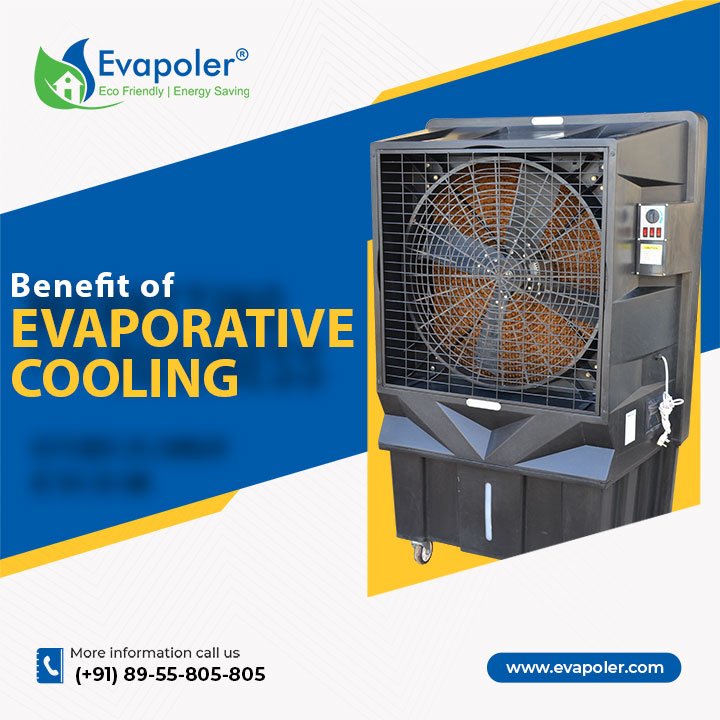
The advent of evaporative coolers has changed how people think about keeping their space cool. Yes! The benefits of evaporative cooling are diverse compared to other options. For decades, people have been using air conditioners to enjoy cooling and comfortable temperature in their homes and offices.
But, evaporative coolers have become a better cooling option in terms of performance and environmental and financial benefits. Putting a cooling system in place is not as easy as you think because it needs many considerations, such as application and size.
Studying the characteristics of installation is also required to obtain comfortable temperatures in various environments and settings. Evaporative cooling wins over conventional air conditioners in this case. It acts as a game-changing and effective alternative to traditional methods.
Scroll down the page to know more details about the evaporative coolers!
Evaporative cooling is an innovative and powerful technology improving indoor conditions at the lowest operating costs. This cooler comes in different varieties, such as direct, indirect, and exhaust models. Every model carries different features and provides certain benefits for the users.
The direct cooler adds relative humidity to the incoming fresh air and supplies it to your space. An indirect cooler will pass via a heat exchanger before distributing the air. Finally, the exhaust air cooler accesses cool thermal energy to minimize the load on AC systems.
According to your needs, you can purchase the specific evaporative cooler and become eligible to grab the following benefits. Ensure you get the cooler from a reputable company like Evapoler to get the best out of your investment.
Maintain optimal indoor air quality
Evaporative cooler accesses 100% fresh and filtered outside air to cool down a room or entire building as per your requirements. It boosts indoor air quality greatly compared to mechanical cooling that re-circulates the polluted and warm indoor air. So, it is widely used in the work environment to ensure a good and healthy workplace for the employees and maximize productivity.
Keep the optimal air humidity
The two-stage evaporative technology makes sure the relative humidity level stays at the optimal level. It enhances the protection against viruses and offers enough control for the eyes, nose, and throat. Additionally, it makes the space perfect for doing various tasks.
Environmentally friendly
Evaporative cooling is an environmentally friendly and effective cooling technology on the earth. It uses water as its refrigerant; therefore, it does not affect the ozone layer as conventional units do. On the other hand, two-stage evaporative cooling utilizes minimal electricity. It makes the unit contain a low carbon footprint.
Besides, an evaporative cooler helps save energy by up to 80% compared to air conditioning. It also enhances the air quality of any space by removing unpleasant odors, dust, and fumes. It minimizes static electricity and enables the cooling of certain zones.
It is extremely easier to install the cooling system. Whether hiring an expert or installing cooler yourself, the entire processtakes less time to complete. While using this cooling system, there is no requirement to close windows or doors. The cost of installation and maintenance is also low. So, spend once and grab these unlimited benefits for a long time.
Even after reading about the benefits, you may wonder where this technology is used effectively. Here are the major destinations where evaporative cooler plays their role well.
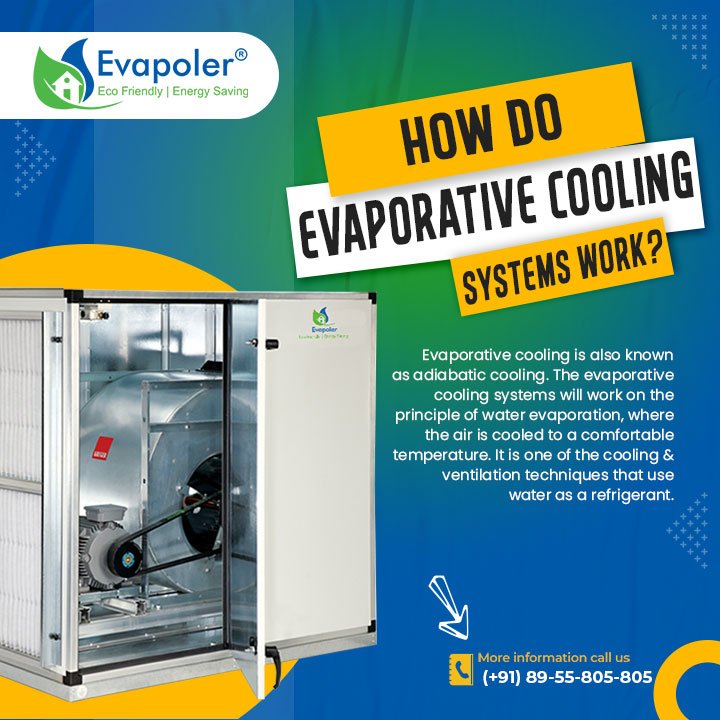
In this article, we will discuss what is an evaporative air cooler and how it works. We’ll also explore some of the benefits of using an evaporative cooling system. This will help you why you should choose an evaporative cooler.
Evaporative cooling is also known as adiabatic cooling. The evaporative cooling systems will work on the principle of water evaporation, where the air is cooled to a comfortable temperature.
It is one of the cooling and ventilation techniques that use water as a refrigerant. During the evaporative cooling process, the water evaporates in the air stream and turns from liquid to gas. This transformation requires energy extracted from the air in the form of heat as a result of this process, the air is cooled.
Evaporative air coolers are an efficient, cost-effective way to beat the heat. These cooling systems use the natural process of evaporation to draw in warm air and release cool air.
Simply put, evaporative cooling can be described as a process that heats water that converts it from liquid to vapor because cooling through evaporation is a natural occurrence. The most common example is perspiration. You could say that evaporative cooling provides cooling on the same principle as perspiration.
When dry, hot air enters the refrigeration unit. It goes through a dampened cooling pad. The water will evaporate, and the heat will be absorbed. As a result, lower-temperature air is pushed into the house. The combination of moving parts reduces air temperature and circulates cool, 100% fresh air throughout the house.
In an evaporative cooling system, the hot outside air is forced through a wet cooling pad using a motor-driven fan. The cooling pad is continuously humidified by a water pump that delivers water to the cooling pad. The cooled air is blown into the building, and the exhausted air is cooled to between 60 and 90 % of the wet bulb. Depending on the efficiency of volatile substances, the air coming out is 10 to 15 °C cooler but has higher humidity.
On the other hand, two-stage evaporative cooling offers up to 114% efficiency of wet-bulb. This results in a temperature drop of up to 17 °C, and due to the lower temperature therefore, it has 60% less moisture than the direct evaporative cooling process.
An evaporative cooling using an indirect/direct system is a sustainable and highly energy-efficient cooling solution. This provides a comfortable and productive climate for the manufacturing plant, distribution center, and office building.
The evaporative cooling process in indirect/direct cooling uses 10% of the energy required for mechanical cooling. While providing the same temperature as traditional mechanical cooling systems, evaporative cooling systems also do not circulate warm and polluted indoor air.
Unlike mechanical cooling Instead, 100% fresh, filtered, clean, and cool air is ventilated into the room or building; as a result, indoor air quality is greatly improved.
Although evaporative coolers require very little maintenance, repairs can cost you a lot if you don’t clean them regularly. You can save money and hassle by regularly ventilating because there will be an accumulation of minerals and sediment that must be removed regularly.
It also helps if you change the cooling pad once in 2-3 years if water is soft and TDS is less than 500 ppm,otherwise it may require water from a softner plant. However, how often you need to change the filter also depends on the unit you use. You can read about the frequency of servicing of evaporative coolers.
In addition to keeping you cool in the summer, there are still some advantages to installing environmentally friendly and energy-efficient evaporative cooling systems in your home.
Evaporative cooling systems use moisture to lower the air temperature. This means you won’t have to deal with issues like dry nose, skin, or eyes. These cooling systems are ideal for people with allergies or asthma. There is no doubt that evaporative coolers are more energy efficient and have lower operating costs compared to popular cooling systems.
You will be surprised to know that when it comes to installation. They only use a quarter of their energy. Suppose you don’t want electricity bills to be too high in the summer. You should seriously consider evaporative cooling systems.
The evaporative cooling system delivers fresh, clean, filtered air. You need to know that evaporative cooling systems do not use recycled air like air conditioners. No one can deny the current concern about the use of refrigerants in air conditioning technology and its impact on the environment. No refrigerants or chemicals are used in evaporative coolers, and they are an environmentally friendly option that creates a healthy indoor and outdoor environment.It can help you to contribute your little bit towards reducing global warming .
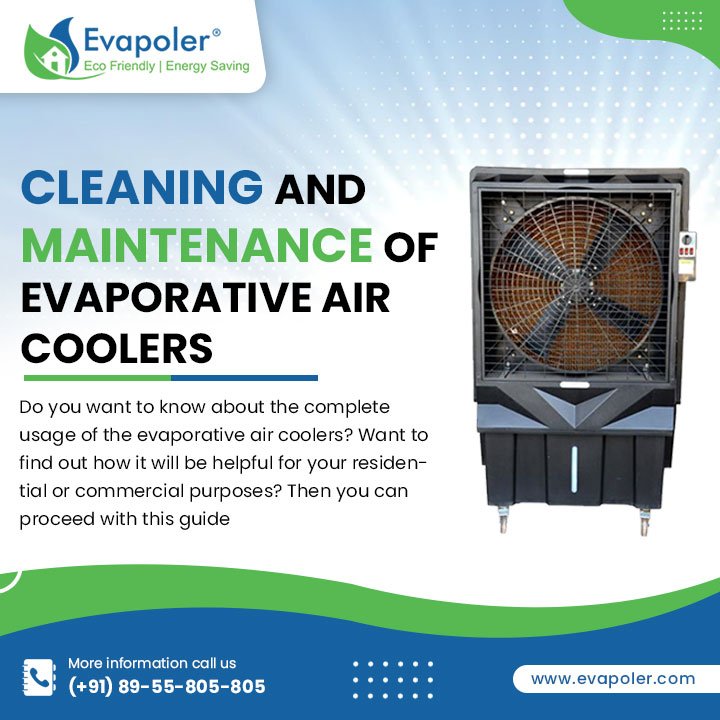
If you wants to enhance the quality of evaporative air coolers, then cleaning and maintenance at the regular interval is must. Taking the necessary steps for cleaning evaporative air coolers can offer you more benefits.
Do you want to know about the complete usage of the evaporative air coolers? Want to find out how it will be helpful for your residential or commercial purposes? Then you can proceed with this guide, understand everything in detail about the Evaporative air coolers, and start using it.
To increase the air cooler’s service life, one must know the procedure to use the evaporative air coolers. Here you can explore some effective maintenance tips that are suggested for the better performance.
FOR MORE DETAILS visit https://www.evapoler.com/maintenance-tips/
The evaporative air coolers are accessed to cool big buildings, industries, factories, and much more. Evaporative air coolers come in different sizes and have energy-efficient ratings.
With that, you can know why you have to use the quality evaporative air coolers. The product comes with the energy-efficient motors and by that you can enhance its usage to the next level. It will never delay at any circumstances and hence grab the evaporative air coolers today.
Can you go beyond evaporative air coolers for the process which has to be involved in the unique process? Based on the people’s demands, the evaporative air coolers come in several thicknesses and sizes.
These evaporative air coolers are highly used for cooling multiple rooms and even large spaces in the office or home. With this unit, you can have two possible arrangements and choose the one according to your need.
These evaporative air coolers designs have a format like a smart feature on the wrist. Some evaporative air coolers designs are chic and simple, while others can be very detailed and beautiful. The smart features power make it the unique product.
The evaporative air coolers devices will keep respiratory problems at bay by destroying the number of fungi and bacteria inside the room. Hence such features can be enhanced when you clean and maintain it regularly.
From the above mentioned scenario, now you have grabbed the complete details of the high quality evaporative air coolers. Follow the maintenance tips for evaporative air coolers properly and then get the better result. So why are you still waiting? Using evaporative air coolers can give you more with proper maintenance.


